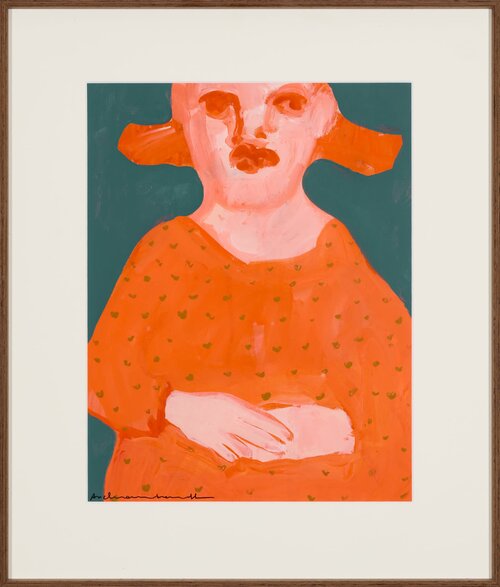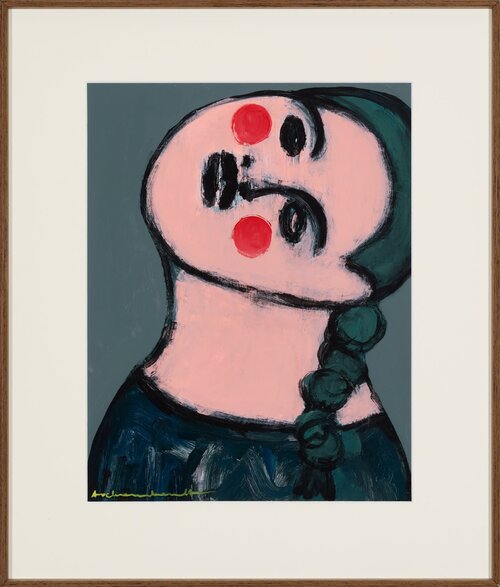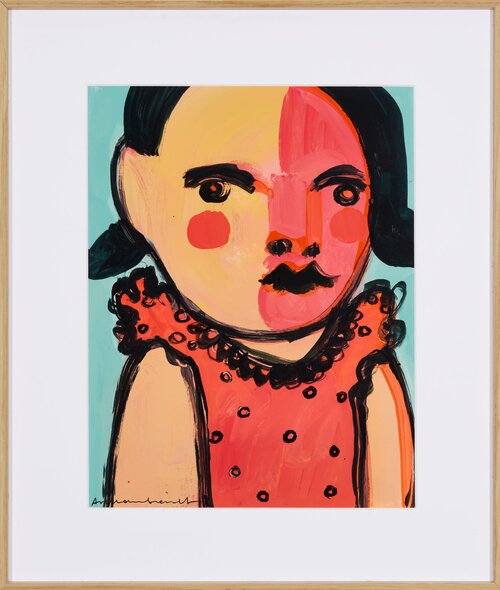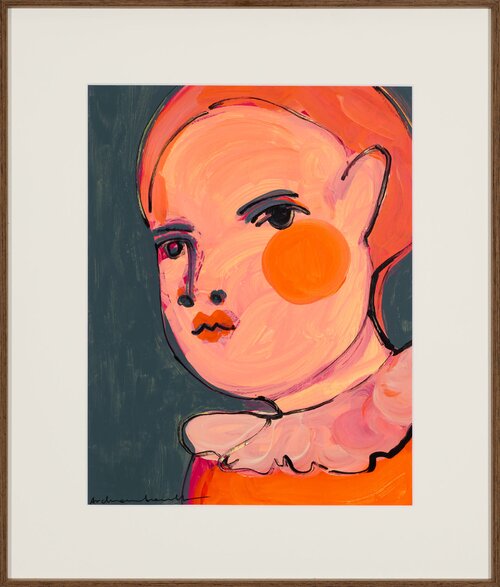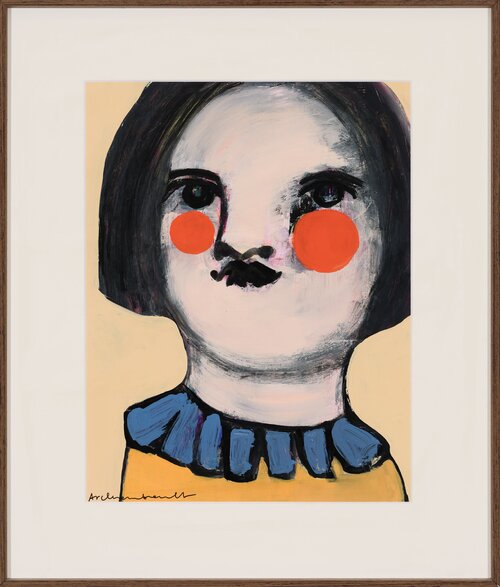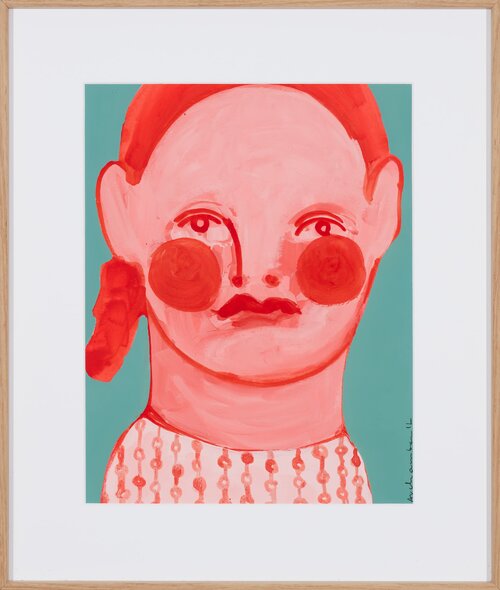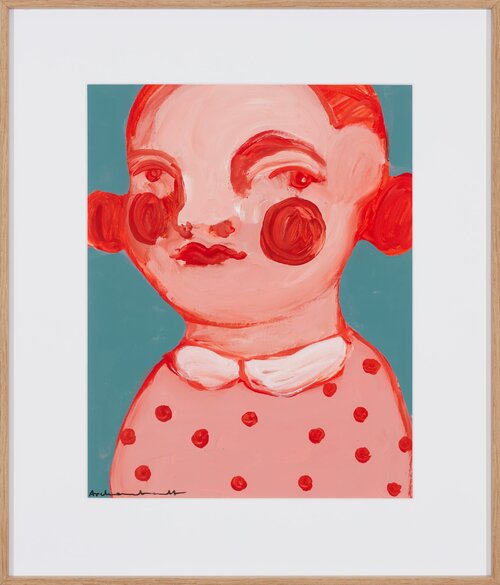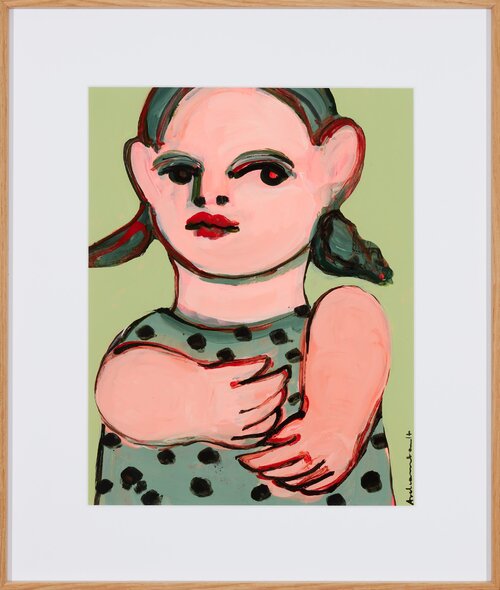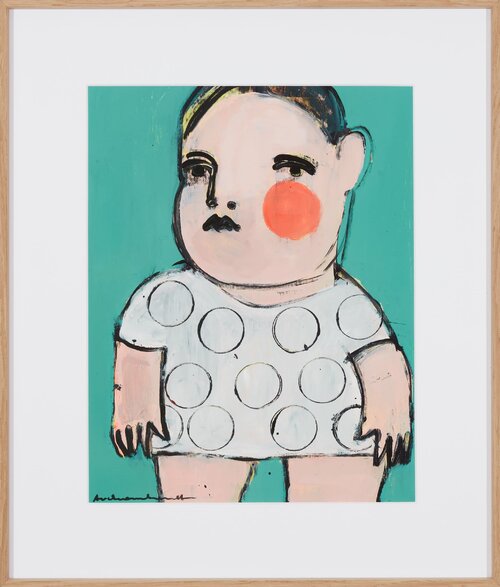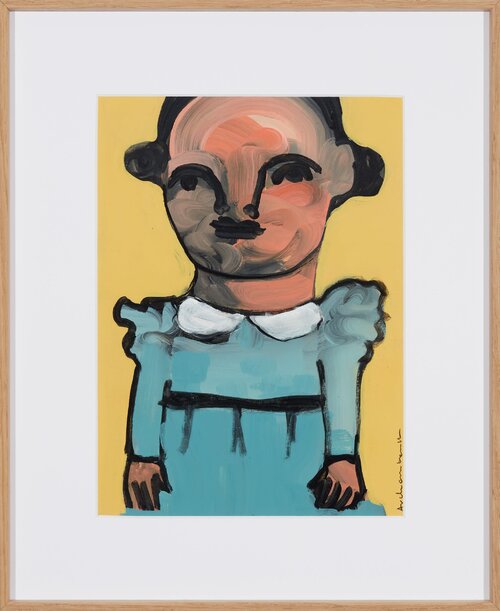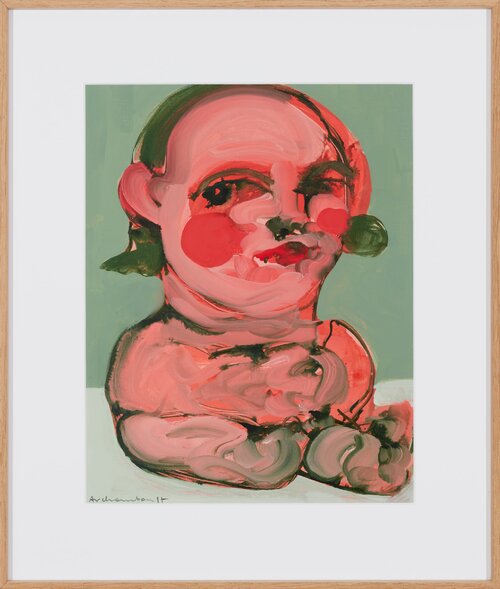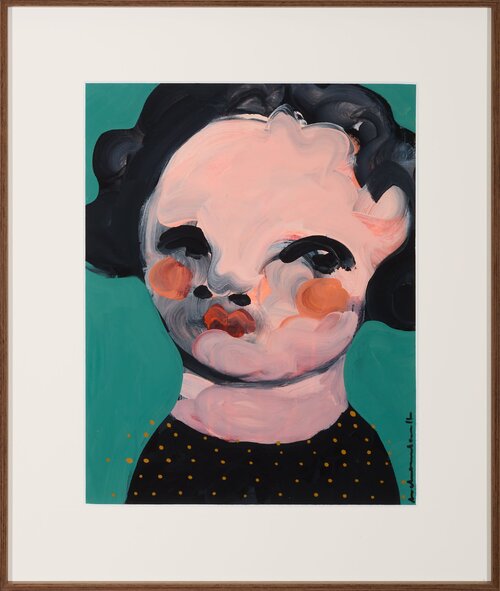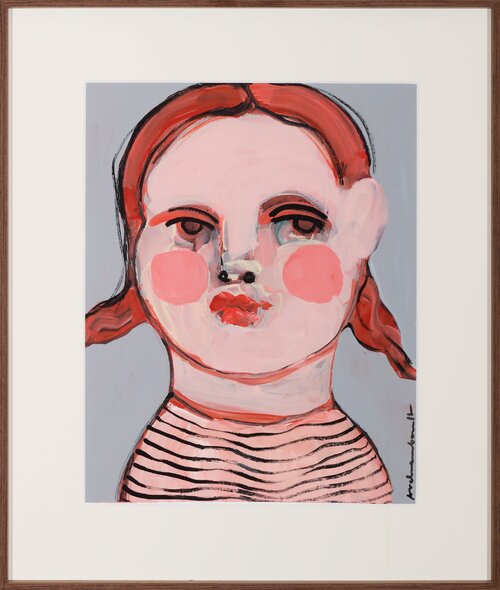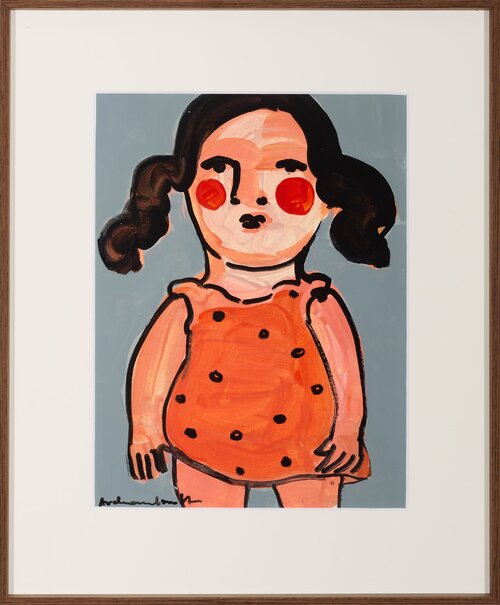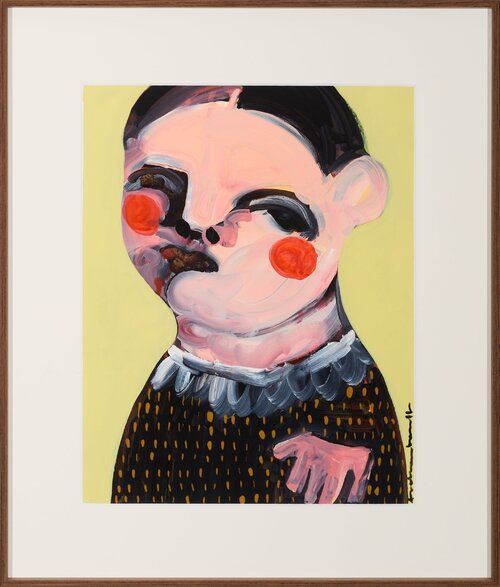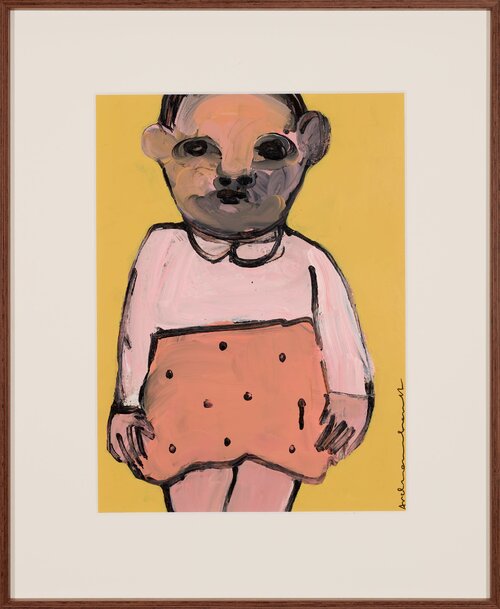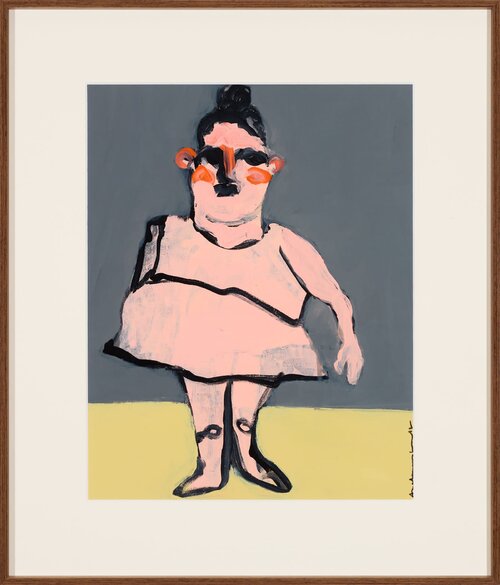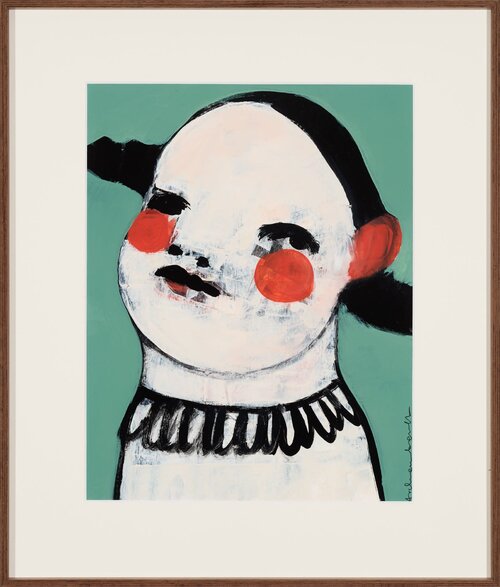
Paulina Archambault
Poland (1976)Inspired by a pure childhood
In her portraits, Paulina Archambault (1976, Krakow/Poland, lives and works in Virginia/USA) searches for the purest human emotions. To do so, she likes to reach back to her childhood. 'As a child, you experience the world, but also your own emotions much more intensely. The sincerity of those childlike feelings fascinates me. By being as pure and honest as possible in the process myself, I want to revive those emotions through my paintings. This requires a profound intimacy,' Paulina Archambault says.
Each new painting starts with a few distinct contours, which Archambault applies to the canvas purely instinctively. 'I start from an abstract idea or an initial emotion, but I change a lot in the course of the process, so that often not much of this onset is visible in the final work. I keep scraping and tinkering with each work until I feel it is quite right. That layering gives a canvas depth,' Archambault says.
'To create certain textures, I experiment with a wide variety of tools, applying paint or just scraping away. I often work on several canvases at the same time, so that I can stand back each time and let an image emerge quietly. At the same time, a lot depends on the inspiration of the moment: sometimes I get a better result in one hour than otherwise in three days. Or as Picasso said: Inspiration exists, but you have to find it while you work. When I am in such a moment, I also want to be able to finish a work. That is why I am currently working mostly on smaller formats'
Being introduced to Michelangelo Buonarroti when she was 11 left a strong impression on Paulina Archambault. 'Although he is mainly known as a sculptor, I love his frescoes immensely and the way he shapes the human body. I am also inspired by the intensity and dynamism of Vincent van Gogh, or the movements and gestures in Max Beckmann's paintings. In my homeland, Stanislaw Wyspianski's portraits of children in pastel fascinated me, while Oskar Kokoschka's work Girl holding a dolly - which I saw during my studies in Hamburg - is also etched on my retina.'
Deep truth
In a particularly intuitive way, Paulina Archambault models expressive portraits with paint layer by layer. 'I constantly challenge myself to experiment, and to destroy what I have just learnt again and again. Depending on the tools I use for a work, it takes on a rougher or softer texture. I also like acrylic paint because it allows you to work in thicker, or just more transparent layers. I attach enormous importance to the painterly gesture, mixing colours into my own palette that connects with real life,' Archambault says. 'Although people sometimes find my frontal portraits frightening, for me they mainly express a sense of melancholy and childlike innocence. Their dark eyes lend them something mysterious. In each new painting, I search for a deeper truth.'
